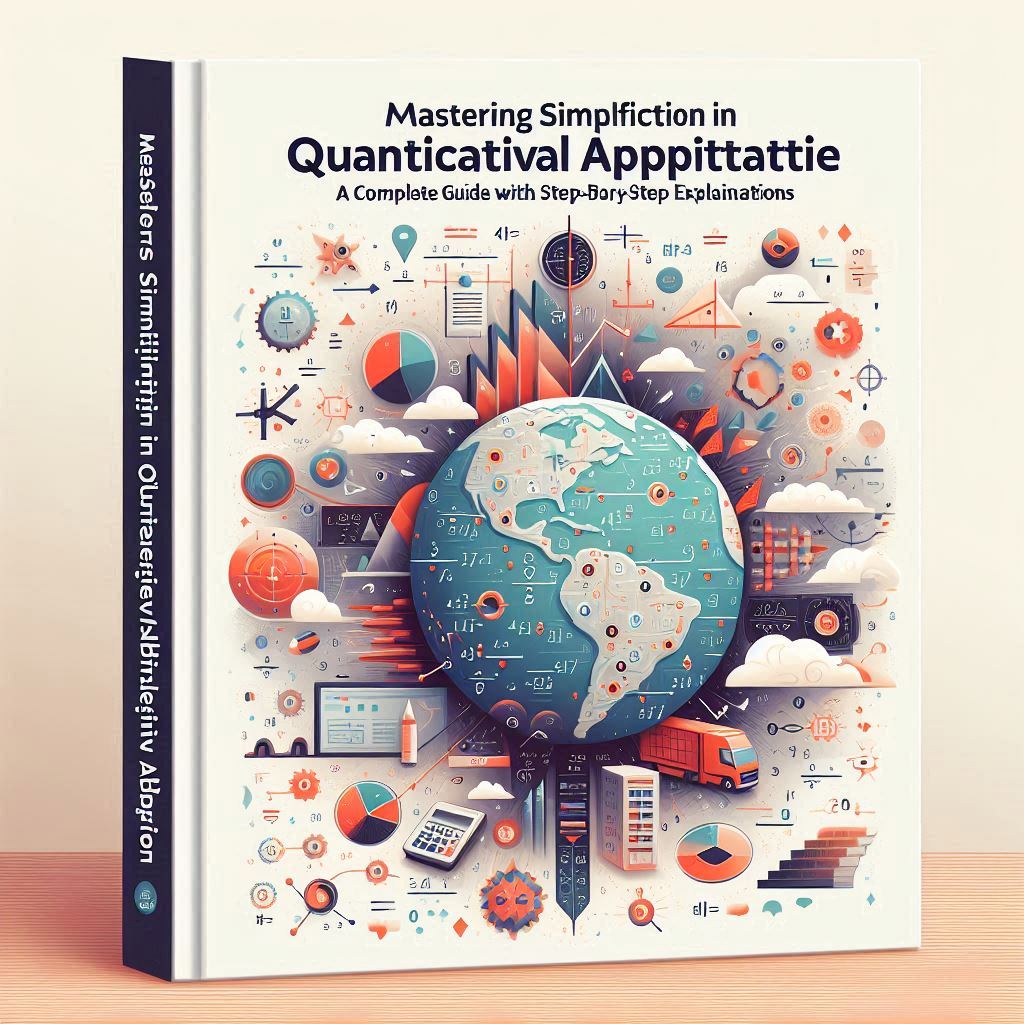Quantitative Aptitude
Simplification
Master quantitative aptitude with our comprehensive guide to simplification, covering BODMAS, fractions, percentages, ratios, and essential techniques for faster, accurate calculations.
Simplification is a foundational concept in quantitative aptitude, essential for solving various mathematical problems efficiently. Whether it’s for competitive exams, academic studies, or day-to-day calculations, mastering simplification helps you solve equations and manage numbers quickly. In this guide, we’ll break down all key concepts of simplification in quantitative aptitude, using straightforward examples and step-by-step explanations. By the end, you’ll have a clear understanding and be able to tackle complex calculations confidently.

Simplification
Understanding Simplification
Simplification in quantitative aptitude refers to the process of reducing complex numerical expressions to their simplest or most easily interpretable form. This makes calculations faster and more accurate. Simplification concepts are often required in:
- Everyday Math: 1Managing finances, calculating discounts, and budgeting often involve simplifying percentages, ratios, or decimal numbers.
- Competitive Exams: Exams like SSC, CAT, GMAT, and Bank PO frequently test candidates on simplification for time-efficient calculations.
IMPORTANT
Important Concept
Order of Operations
To solve complex expressions, we must follow the BODMAS or BIDMAS rule:
- Brackets
- Order (powers, roots)
- Division and Multiplication
- Addition and Subtraction
Ignoring this rule leads to incorrect answers.
Examples of BODMAS in Action = Simplify 7+3×(4+52)
- Step 1: Calculate the power: 52=25
- Step 2: Bracket: 4+25=29
- Step 3: Multiplication: 3×29=87
- Step 4: Addition: 7+87=94
Answer: 94
Importance of BODMAS in Multiple-Step Expressions
By following BODMAS, we ensure each step in a complex problem is tackled in the correct order, avoiding potential mistakes.
Concept of Fractions and Decimals
Fractions and decimals are two ways of representing parts of a whole. Both need simplification for easier computation.
Operations with Fractions
Addition/Subtraction: Convert fractions to a common denominator before adding/subtracting.
- Example: (3/4)+(5/8).
- Step 1: Convert to common denominator (8).
- Step 2: (3×2)/(4×2)=6/8
- Step 3: (6/8)+(5/8)=11/8.
Multiplication: Multiply the numerators and denominators directly.
- Example: (2/3)×(4/5)=8/15.
Division: Invert the divisor and multiply.
- Example: (2/3)÷(4/5)=(2/3)×(5/4)=10/12= 5/6.
Decimals in Simplification
Decimals can be converted to fractions or rounded for ease of calculation. When working with mixed decimal operations:
Simplifying Ratios and Proportions
Fractions and decimals are two ways of representing parts of a whole. Both need simplification for easier computation.
Ratios compare two quantities and are simplified by dividing each term by the same number to make them manageable.
Example of Simplifying Ratios, Given the ratio 50:100, divide both by 50 to get 1:2
Proportions indicate two equal ratios. To verify proportions, cross-multiply and check for equality.
- Example: Check if 4:6=6:9
- 4×9=36 and 6×6=36, so the proportion is valid.
Working with Percentages
Percentages express values as parts of 100 and are often simplified by converting them into decimals or fractions.
Basic Percentage Calculations
- Finding Percentages: To find 30% of 150, calculate 150×0.3=45.
-
Percentage Increase/Decrease: Calculate the difference, divide by the original amount, and multiply by 100.
- Example: Price increase from 80 to 100.
- Increase: 100−80=20
- Percentage increase: 20/80×100=25%
- Example: Price increase from 80 to 100.
Simplification Concept
Surds and Indices
Surds (irrational roots) and indices (exponents) follow specific rules that simplify expressions involving roots and powers.
Rules for Surds
- Multiplication: √a×√b=√ab
- Division: √a/√b=√a/b
Example: √8×√2=√16=4
Rules for Indices
- Addition of Powers: am×an=am+n
- Power of Power: (am)n=amn
Example: 32×33= 32+3= 35= 243
Squares, Cubes, and Square Roots
Memorizing squares and cubes of numbers from 1-20 (and higher, if possible) can speed up calculations.
Quick Techniques for Squares
- To find the square of numbers ending in 5, use the formula:
Example: 352=(3×4) followed by 25=1225
- Use approximations or nearby square numbers for faster calculations.
Approximation Techniques
Approximation saves time when exact answers aren’t required, as in competitive exams. Some techniques include:
- Rounding Off: Round numbers to the nearest whole or decimal point.
- Using Known Fractions: Replace irrational numbers with rational approximations like π≈22/7.
Example: For 47.89×3.12≈48×3=144, which can help provide an approximate answer quickly.
Practice
Practice Questions with Solutions
Simplify (6^2+3×2)−4×5
Solution:
- Step 1: Power: 62=36
- Step 2: Multiplication: 3×2=6; 4×5=20
- Step 3: Addition and subtraction: (36+6)−20=22
Answer: 22
Calculate (30×3)/6 + (24/8) − 2
Solution:
- Step 1: Multiplication: 30×3=90
- Step 2: Division: 90/6=15; 24/8=3
- Step 3: Addition and subtraction: 15+3−2=16
Answer: 16
Final Tips for Mastering Simplification
- Regular Practice: Familiarity with calculations improves speed.
- Memorize Key Basics: Keep multiplication tables, squares, cubes, and conversions handy.
- Accuracy Over Speed at First: Speed will come with time and consistent practice.
Simplification Mastery Challenge
Master the art of Simplification with this progressively challenging three-stage quiz designed to boost your calculation speed!
Conclusion
Simplification is a critical skill in quantitative aptitude that allows for faster and more accurate calculations, whether in exams or everyday math. By understanding the principles and practicing these techniques, you’ll be able to tackle any problem with confidence.

Leave a Reply